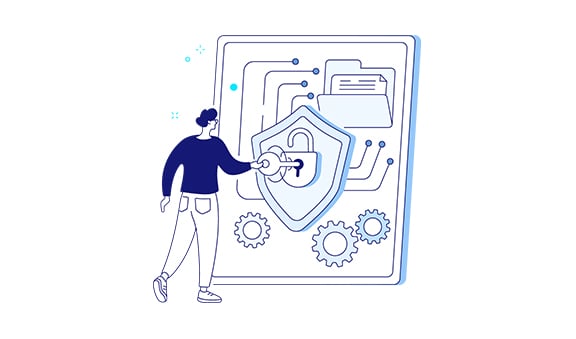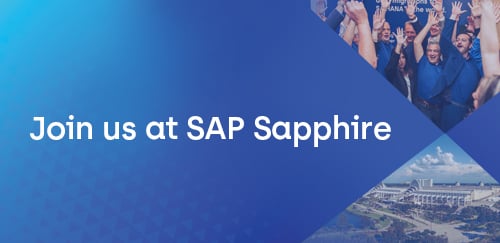Data governance
Data governance helps organizations establish guidelines for data management, assign responsibilities, and maintain the quality and reliability of their information. It involves making sure that data is accurate, secure, and used in the right way.

Important Reads
Housekeeping
Data housekeeping refers to the process of deleting unnecessary data, such as duplicates, temporary files, or technical data (logs, protocols).
Effective data housekeeping can help keep the database lean and minimize the costs associated with storing and managing large amounts of data. According to SNP’s analyses, even up to 40% of SAP BW systems can be cluttered with unnecessary data. Deleting no-value data optimizes system performance and cuts maintenance costs.
Overall, data housekeeping is an important aspect of data management that helps organizations maintain the quality and usefulness of their data assets over time.
Automated housekeeping routines can be scheduled to run during non-peak hours, minimizing any impact on system performance and user operations. Regularly performed automated housekeeping activities help organizations maintain a healthy and efficient SAP system, ensuring data integrity, compliance, and optimal performance.
Data archiving
Short headline
Data archiving refers to the process of moving inactive or rarely accessed data to a separate storage location for long-term retention. This is done to free up space on primary storage systems, such as databases or file servers, while still retaining the data for future reference or compliance purposes.
Archived data is typically moved to less expensive storage media, such as cloud storage, where it can be accessed if needed, but doesn’t consume valuable resources on the primary storage system. Archived data is usually stored in a compressed and encrypted format to reduce storage space requirements and enhance security.
Data archiving is an important part of data management as it helps organizations manage the growth of their data while keeping costs under control. It also ensures that valuable information is preserved for future reference and compliance purposes, such as legal or regulatory requirements, without compromising the performance of primary systems.
Effective data archiving strategies offer several benefits to organizations, including:
- Improved system performance
- Cost savings
- Enhanced business intelligence and analytics
- Simplified, lean system landscape
- System preparation for migrations or system upgrades
Organizations should define archiving policies, establish data retention periods, and ensure the availability of proper archiving tools or solutions to effectively manage and retrieve archived data when needed. In this customer success story, you can read how United Farmers of Alberta managed to reduce their SAP ERP database footprint.
Related reads:
System decommissioning
System decommissioning means archiving an entire SAP system. This is a common scenario when talking about mergers and acquisitions, but also system upgrades and transformations, including migrations to S/4HANA. In this blog post, we answer how to best deal with legacy systems.
A system that is no longer productive often needs to be kept due to compliance reasons for usually 10 years (but even up to 80 years), depending on the industry and local legislations. Data needs to be available for auditors, users, or investigation teams (in case of legal disputes). On the other hand, legacy data should be deleted as soon as it is (legally) possible.
Rather than keeping the old systems running, it is better to move legacy data to an inexpensive storage where you can govern it and delete it selectively as needed.
There are several common reasons for decommissioning a legacy system:
- Outdated technology: Legacy systems often run on outdated technology stacks that may no longer be supported or compatible with modern infrastructure. This can lead to issues such as limited scalability, security vulnerabilities, and difficulties integrating with newer systems and applications.
- High maintenance costs: Legacy systems often require significant maintenance efforts and expenses. The aging technology may require specialized skills or obsolete hardware, leading to higher costs for system upkeep, software updates, and hardware maintenance. Decommissioning the legacy system can help reduce ongoing maintenance costs.
- Inefficient and inflexible processes: Legacy systems may have been designed around outdated business processes that are no longer efficient or aligned with current operational needs. These systems often lack the flexibility and adaptability required to support evolving business requirements. Decommissioning allows for the adoption of more modern and agile systems that better align with business processes.
- Lack of integration: Legacy systems may have limited capabilities for integration with newer systems, applications, or external partners. This can hinder data exchange, collaboration, and automation across the organization. Decommissioning the legacy system can enable the implementation of a more integrated and interconnected IT ecosystem.
- Data silos and inconsistent data: Legacy systems often suffer from data fragmentation and a lack of consistency. Data may be stored in multiple locations and formats, making it difficult to obtain a holistic view of the information. Decommissioning the legacy system can involve migrating and consolidating data into a centralized repository, improving data accessibility and quality.
- Compliance and regulatory issues: Legacy systems may not meet the requirements of new compliance regulations or industry standards. These systems might lack the necessary controls and features to ensure data privacy, security, or auditability. Decommissioning the legacy system allows organizations to replace it with a compliant solution that meets current regulatory obligations.
- User experience and productivity: Legacy systems may have outdated user interfaces and cumbersome workflows, leading to a poor user experience and reduced productivity. Employees may struggle with complex or time-consuming processes, negatively impacting efficiency and employee satisfaction. Decommissioning can involve replacing the legacy system with a more user-friendly and intuitive solution.
- Business strategy and innovation: Legacy systems can hinder innovation and limit the organization’s ability to adapt to market changes. They may lack the necessary features or integrations required for implementing new business strategies or exploring emerging technologies. Decommissioning enables organizations to invest in modern systems that support their strategic objectives and promote innovation.
It is important to carefully plan and execute the decommissioning process to ensure a smooth transition. This includes data migration, system retirement, user training, and change management activities to minimize disruptions and maximize the benefits of replacing the legacy system.
You can decommission an SAP system while retaining access to its data. Decommissioning an SAP system typically involves retiring the hardware, software, and infrastructure associated with the system. However, the data contained within the system can be extracted and migrated to a different storage solution or integrated with a data lake or data warehouse.
Here are a few approaches to decommissioning an SAP system while preserving data access:
- Data archiving: Data archiving involves extracting and storing data from the SAP system in a separate archive repository. Archiving allows you to retain the data for long-term access and compliance purposes while freeing up the SAP system for retirement. Archiving solutions typically provide search and retrieval capabilities to access the archived data when needed.
- Data migration: If you plan to transition to a new SAP system or a different application, you can migrate the relevant data from the decommissioned SAP system to the new environment. This process involves extracting, transforming, and loading (ETL) the data into the target system or data repository. This way, you can continue to access and utilize the data in the new environment.
- Data lake or data warehouse: Instead of migrating data to a specific application or system, you can choose to store the decommissioned SAP system’s data in a data lake or data warehouse. These solutions provide a centralized repository for storing and analyzing large volumes of structured and unstructured data. Data lakes or data warehouses allow for easy access, integration, and analysis of the data by various users and systems.
Organizations often have data retention policies that define the duration for which certain types of data should be retained. These policies are influenced by legal and regulatory requirements specific to the industry or country. It is important to note that data should be deleted once its retention period expires. To comply with those policies, we recommend using an automated tool for data deletion, such as Outboard Datafridge. It comes with a built-in control system for data governance to ensure compliance with GDPR, legal hold and retention rules.
Data masking vs. data scrambling
Data masking and data scrambling are two techniques used to protect sensitive information in databases and other data repositories. While they both aim to obscure sensitive data, there are some important differences between them:
Data masking: Data masking is a technique used to hide sensitive data by replacing it with fictitious or obfuscated data that still looks realistic. The goal is to protect sensitive data while still allowing non-sensitive data to be used for testing or other purposes. For example, a credit card number might be masked by replacing all but the last four digits with X’s, while preserving the format and structure of the original data.
Data scrambling: Data scrambling, on the other hand, is a technique used to encrypt or shuffle data in a way that makes it difficult to decipher without the proper decryption key or algorithm. The goal is to protect sensitive data by making it unintelligible to unauthorized users. For example, a social security number might be scrambled by rearranging the digits in a random order, or by encrypting it using a strong encryption algorithm.
In summary, the key difference between data masking and data scrambling is that data masking aims to hide sensitive data while preserving its overall structure and format, while data scrambling aims to encrypt or scramble the data in a way that makes it difficult to decipher without the proper decryption key or algorithm.
